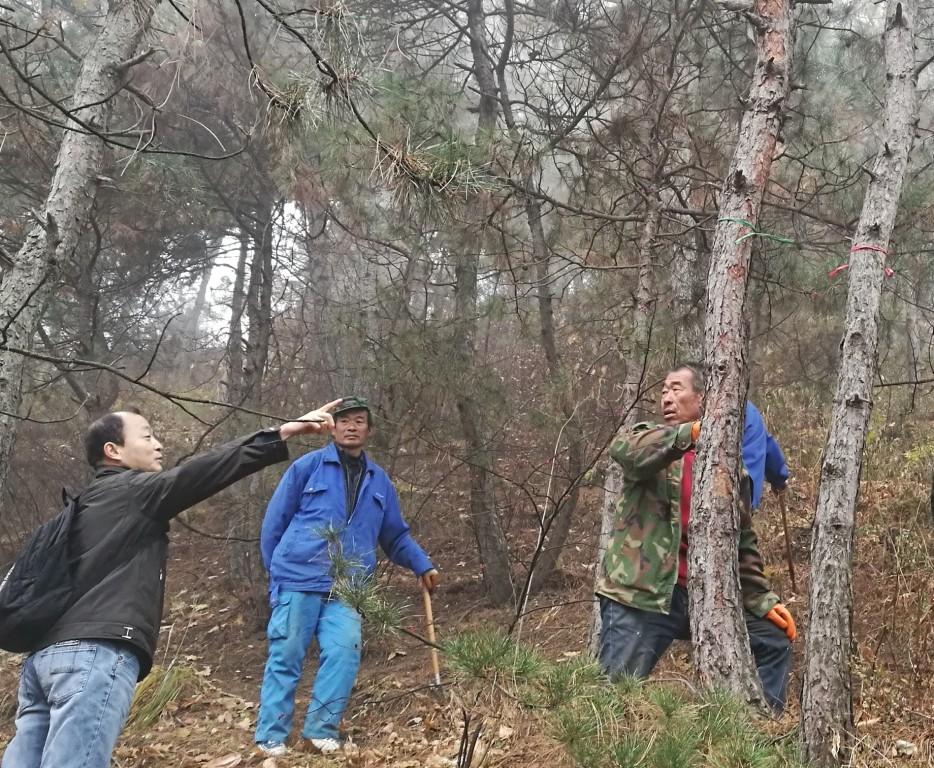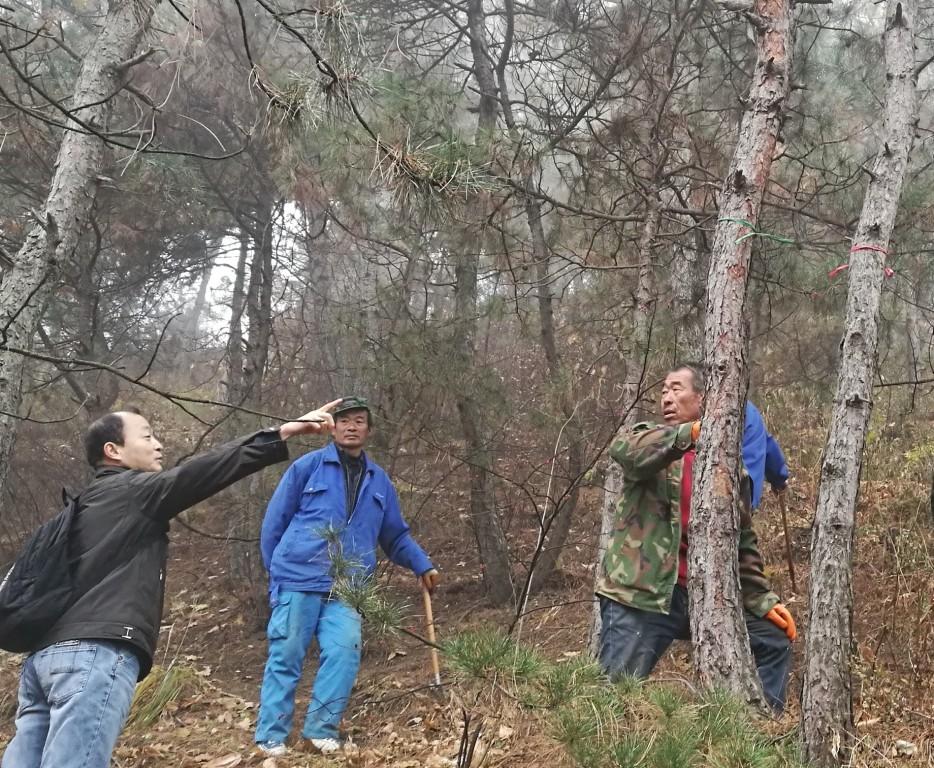
Thinning as a method for improving forest functions and introducing native species into afforestation plantations
Details
Thinning is one of the most common forestry practices in most parts of the world to improve the wood quality of the forest , but also its growth speed and the general stability and health of the forest. It has less been viewed as a tool for transformation, as often after reaching harvesting age large parts of or the entire forest are harvested and a new cycle begins.
Around the Beijing area and in many parts of Eastern China, however, producing wood is not the primary function of the forests. Largely afforested during the 70s until today, these forests were planted to prevent erosion, even out water flows and generally restore the functions the natural forests provided there before they were largely cut down. While many of the primary concerns were sufficiently addressed through the planting of monocultures of Oriental Thuja (侧柏; Platycladus orientalis), Chinese Pine (油松; Pinus tabuliformis) or different species of poplar, the full restoration of the ecosystem services has not been possible. Species diversity, general forest health and resilience, habitat value, improvement of water quality and opportunities for locals to harvest forest products have all only achieved partial successes at most.
While it’s economically speaking the most efficient to wait until the trees reach harvesting age, this is not necessarily the relevant measurement in these areas, especially as the “Natural Forest Protection Program”, applying to many afforested areas, currently prevents the removal of large volumes of wood, which consequently means full harvests. The thinning approach therefore can not only short-circuit the succession cycle in the afforested areas, but also complies with local laws.
Considerations for Thinning Operations
As thinning is not only supposed to introduce the native species into the forest, but also improve its general resilience, it is important to not just randomly select trees to be removed. A forest management plan for the respective stand with concrete goals should be developed, defining the criteria for the removal of trees and the definition of target trees (trees to be kept and promoted in their growth).
Possible criteria could be:
• the healthiest trees with good h/d ratio >33% are kept
• removal of trees until <70% crown coverage
• direct competitors in crown to target trees are to be removed
• native species that have naturally established in the understory are favored, competitor trees to those also removed
• if supplemental planting is planned, depending on the light requirements of the species an uneven thinning approach, leaving space for small clearings, might be considered
Supplemental Planting
The ability of native species to naturally seed in strongly depends on the presence of a seed source in form of mature trees in the area. If desired native species lack such a seed source supplemental planting is necessary. Particularly with non-commercial local species this can be a problem. It is important to find a nursery willing to grow those species early on. Furthermore, a few years later additional thinnings might be necessary to ensure survival and competitiveness of the planted trees.
Compliance with Harvest Quotas
It has been proven that planning ahead for the approval of harvesting quotas, especially in areas that have quite restricted quotas is crucial for a timely execution of the thinning operations. Often approval can take several months and the proposed thinning volume could, depending on scale, also compete with other proposals. Thus an early submission of the intended volume removed is of the essence. This, in turn requires early visits to the site, where standing volume, stocking, DBH and other relevant data for the planning of the thinning operation will be compiled.
Training of Personnel for Marking Trees
It is important that, when funds for training people in the marking of trees for thinning become available, the training efforts are focused on people being able to do this kind of work long-term. Therefore it should be inquired beforehand if the course takers are seeing this as a long-term work, or a temporary job. Even better, a staff member at the own organization should receive advanced training, so he could teach others later, if necessary. If the treated areas are small enough, one permanent marker might also be sufficient in general and prevent a drop in quality when people with little experience are marking and selecting trees.
References (pls don’t click on these, they are linked to my private documents):
How to do a silvicultural prescription Info Sheet
(Annex Part 2 Sino-German Project - Guideline Forest Management Practices)
The Practice of Silviculture, Mark Ashton, Ch 21 Thinning

